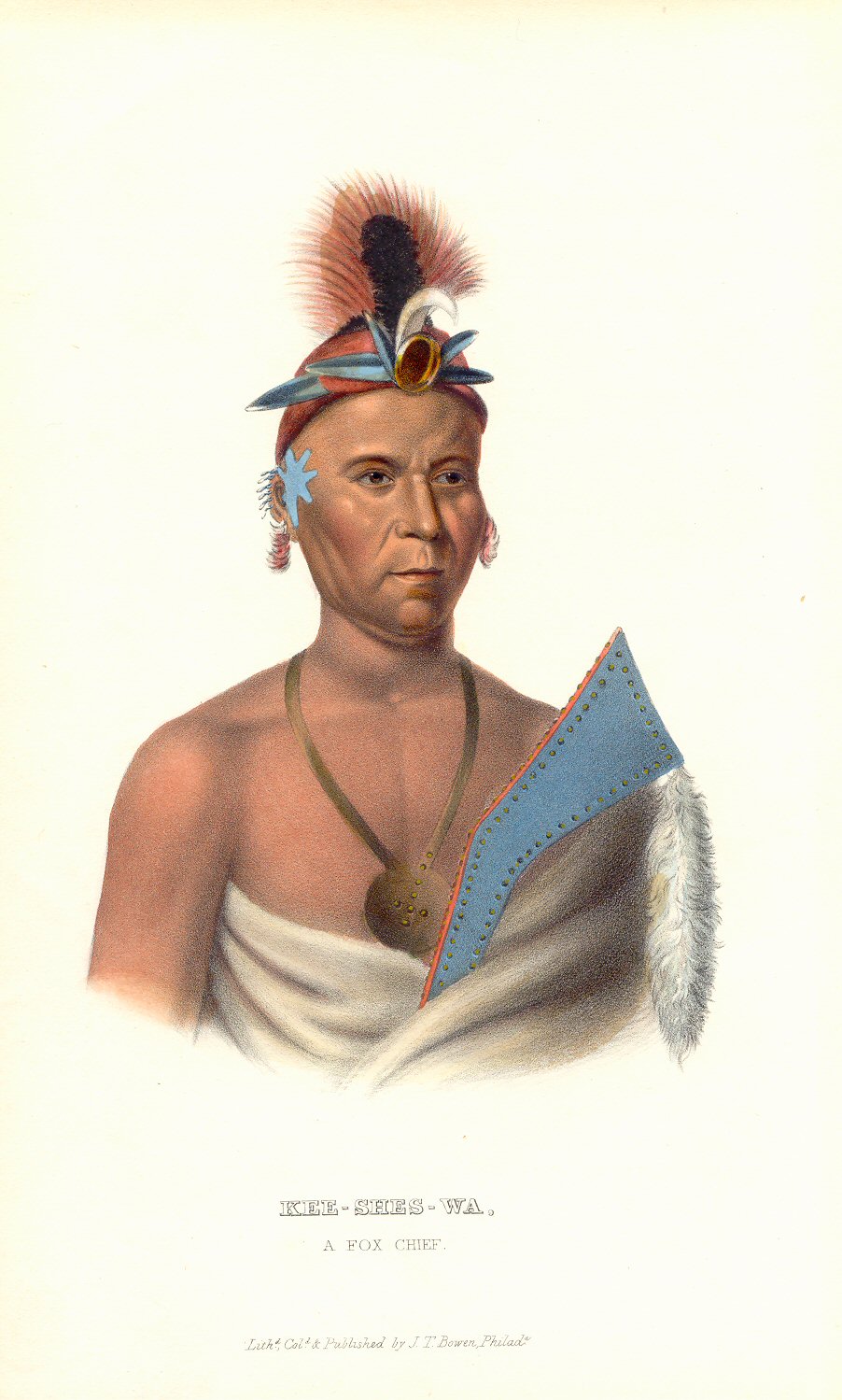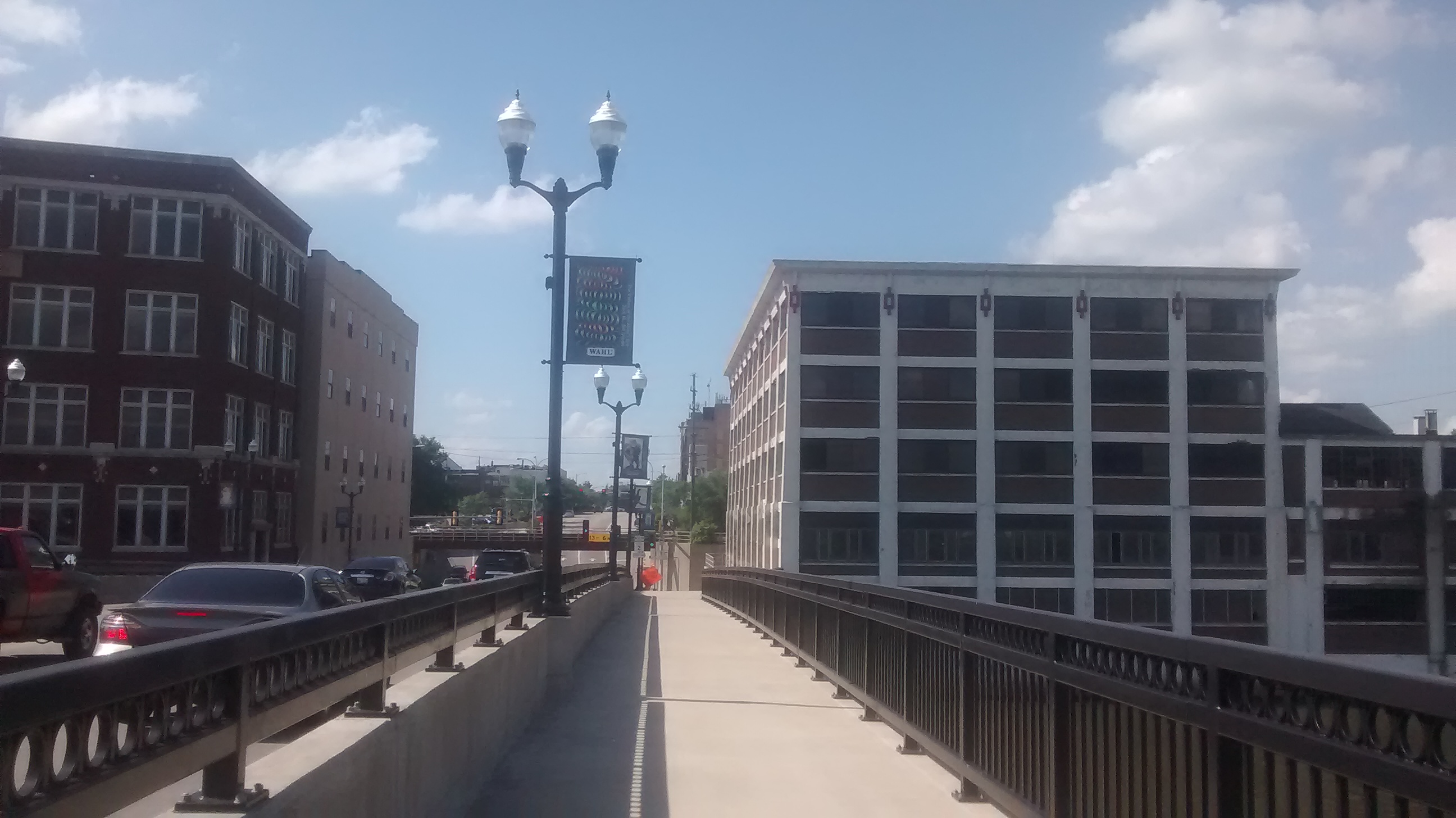|
Rock Island County, Illinois
Rock Island County is a county located in the U.S. state of Illinois, bounded on the west by the Mississippi River. According to the 2020 census, it had a population of 144,672. Its county seat is Rock Island; its largest city is neighboring Moline. Rock Island County is one of the four counties that make up the Davenport- Moline-Rock Island, IA-IL Metropolitan Statistical Area. History Rock Island County was formed in 1831 out of Jo Daviess County. It was named for Rock Island, an island in the Mississippi River now known as Arsenal Island. The Rock River (which the Sauk and Meskwaki peoples called Sinnissippi, meaning "rocky waters") flows from Whiteside County and points further east and north and joins the Mississippi River at Rock Island. The Sinnissippi Mounds, dating from the Hopewell period and on the National Register of Historic Places are upriver at Sterling in Whiteside County. Geography According to the U.S. Census Bureau, the county has a total ... [...More Info...] [...Related Items...] OR: [Wikipedia] [Google] [Baidu] |
Rock Island Arsenal
The Rock Island Arsenal comprises 946 acres (383 ha) and is located on Arsenal Island, originally known as Rock Island, on the Mississippi River between the cities of Davenport, Iowa, and Rock Island, Illinois. It is home to the United States Army First United States Army, First Army Headquarters, and the United States Army Center of Excellence for Additive Manufacturing. Historically the indigenous Sauk people used Rock Island as their summer camp site. Encroaching European Americans coming into the area disputed the claim of tribal ownership, and competition between the peoples led to the Black Hawk War of 1832. It was named for Black Hawk (Sauk leader), Black Hawk, the primary leader of the Sauk people, Sauk. In 1816 the federal government authorized the army to build Fort Armstrong, Illinois, Fort Armstrong here, to protect shipping on the river in the aftermath of the War of 1812 with Great Britain. Decades after the Civil War, in the 1880s the army established a found ... [...More Info...] [...Related Items...] OR: [Wikipedia] [Google] [Baidu] |
Meskwaki
The Meskwaki (sometimes spelled Mesquaki), also known by the European exonyms Fox Indians or the Fox, are a Native American people. They have been closely linked to the Sauk people of the same language family. In the Meskwaki language, the Meskwaki call themselves ', which means "the Red-Earths", related to their creation story. The Meskwaki suffered damaging wars with the French and their Native American allies in the early 18th century, with one in 1730 decimating the tribe. Euro-American colonization and settlement proceeded in the United States during the 19th century and forced the Meskwaki south and west into the tallgrass prairie in the American Midwest. In 1851 the Iowa state legislature passed an unusual act to allow the Fox to buy land and stay in the state. Other Sac and Fox were removed to Indian territory in what became Kansas, Oklahoma and Nebraska. In the 21st century, two federally recognized tribes of "Sac and Fox" have reservations, and one has a settl ... [...More Info...] [...Related Items...] OR: [Wikipedia] [Google] [Baidu] |
US 6
U.S. Route 6 (US 6) or U.S. Highway 6 (US 6), also called the Grand Army of the Republic Highway, honoring the Grand Army of the Republic, American Civil War veterans association, is a main route of the United States Numbered Highway System. While it currently runs east-northeast from Bishop, California, to Provincetown, Massachusetts, the route has been modified several times. The highway's longest-lasting routing, from 1936 to 1964, had its western terminus at Long Beach, California. During this time, US 6 was the longest highway in the country. In 1964, the state of California 1964 state highway renumbering (California), renumbered its highways, and most of the route within California was transferred to other highways. This dropped the highway's length below that of U.S. Route 20, US 20, making it the second-longest U.S. Route in the country. However, since US 20 has a discontinuity through Yellowstone National Park, US 6 remains the lo ... [...More Info...] [...Related Items...] OR: [Wikipedia] [Google] [Baidu] |
Interstate 280 (Illinois–Iowa)
Interstate 280 may refer to multiple highways, all of which are or were related to Interstate 80: * Interstate 280 (California), a north–south freeway running from San Jose to San Francisco * Interstate 280 (Iowa–Illinois), part of the beltway around the Quad Cities * Interstate 280 (New Jersey), a connector from Interstate 80 to Interstate 95 in Newark * Interstate 280 (Ohio), a connector in Toledo from Interstates 80/90 to Interstate 75 * Interstate 276, once designated as I-280 when I-76 was I-80S * Interstate 680 (Nebraska–Iowa) Interstate 680 (I-680) in Nebraska and Iowa is the northern bypass of the Omaha–Council Bluffs metropolitan area. I-680 spans from its southern end in western Omaha, Nebraska, to its eastern end near Crescent, Iowa. The freeway passes ..., once designated as I-280 {{Road disambiguation 2 ... [...More Info...] [...Related Items...] OR: [Wikipedia] [Google] [Baidu] |
I-280
Interstate 280 may refer to multiple highways, all of which are or were related to Interstate 80: * Interstate 280 (California), a north–south freeway running from San Jose to San Francisco * Interstate 280 (Iowa–Illinois), part of the beltway around the Quad Cities * Interstate 280 (New Jersey), a connector from Interstate 80 to Interstate 95 in Newark * Interstate 280 (Ohio), a connector in Toledo from Interstates 80/90 to Interstate 75 * Interstate 276, once designated as I-280 when I-76 was I-80S * Interstate 680 (Nebraska–Iowa) Interstate 680 (I-680) in Nebraska and Iowa is the northern bypass of the Omaha–Council Bluffs metropolitan area. I-680 spans from its southern end in western Omaha, Nebraska, to its eastern end near Crescent, Iowa. The freeway passes ..., once designated as I-280 {{Road disambiguation 2 ... [...More Info...] [...Related Items...] OR: [Wikipedia] [Google] [Baidu] |
Interstate 88 (west)
Interstate 88 (I-88) is an Interstate Highway in the US state of Illinois that runs from an interchange with I-80 near Silvis and Moline to an interchange with I-290 and I-294 in Hillside, near Chicago. I-88 is long. This route is not contiguous with I-88 in New York. Since 2010, most of I-88 has been part of the Chicago–Kansas City Expressway. The highway also runs through the cities of Aurora, Naperville, DeKalb, and Dixon. East of Rock Falls, the route is a part of the Illinois Tollway system. Route description I-88 runs concurrently with Illinois Route 110 (IL 110) and its speed limit is west of IL 47. East of this point, the speed limit is to the Aurora toll plaza, and for the rest of its route. East Moline to Rock Falls Starting at I-80 at a cloverleaf interchange, IL 5 ends there while IL 92 continues eastward. I-88 begins at that interchange and then traverses eastward. Immediately east of the cloverleaf, I-88, IL 92, ... [...More Info...] [...Related Items...] OR: [Wikipedia] [Google] [Baidu] |
I-88 , running from Chenango to Rotterdam
{{Road disambiguation ...
Interstate 88 may refer to either of two United States Interstate highways: * Interstate 88 (Illinois), running from East Moline to Hillside * Interstate 88 (New York) Interstate 88 (I-88) is an Interstate Highway located entirely within the US state of New York (state), New York. Nominally signed as an east–west road as it has an even number, it extends for in a northeast–southwest direction from ... [...More Info...] [...Related Items...] OR: [Wikipedia] [Google] [Baidu] |
Interstate 80
Interstate 80 (I-80) is an east–west transcontinental freeway that crosses the United States from San Francisco, California, to Teaneck, New Jersey, in the New York metropolitan area. The highway was designated in 1956 as one of the original routes of the Interstate Highway System; its final segment was opened in 1986. At a length of , it is the second-longest Interstate Highway in the United States, after I-90. It runs through many major cities, including Oakland, Sacramento, Reno, Salt Lake City, Omaha, Des Moines, and Toledo, and passes within of Chicago, Cleveland, and New York City. I-80 is the Interstate Highway that most closely approximates the route of the historic Lincoln Highway, the first road across the United States. The highway roughly traces other historically significant travel routes in the Western United States: the Oregon Trail across Wyoming and Nebraska, the California Trail across most of Nevada and California, the first transcontinental airmai ... [...More Info...] [...Related Items...] OR: [Wikipedia] [Google] [Baidu] |
Interstate 74
Interstate 74 (I-74) is an Interstate Highway in the Midwestern and Southeastern United States. Its western end is at an interchange with I-80 in Davenport, Iowa; the eastern end of its Midwest segment is at an interchange with I-75 in Cincinnati, Ohio. The major cities that I-74 connects to include Davenport, Iowa; Peoria, Bloomington, and Champaign, Illinois; Indianapolis, Indiana; and Cincinnati, Ohio. I-74 also exists as several disconnected sections of highways in North Carolina. Route description , - , IA , , , - , IL , , , - , IN , , , - , OH , , , - , WV , , , , , - , VA , , , , , - , NC , , , - , SC , , , , , - , Total , , Iowa In the state of Iowa, I-74 runs south from I-80 for before crossing into Illinois on the I-74 Bridge. North of the Mississippi River, I-74 bisects Bettendorf and Davenport. Illinois In the state of Illinois, I-74 runs south from Moline to Galesburg; from this point, it runs southeast through Peoria t ... [...More Info...] [...Related Items...] OR: [Wikipedia] [Google] [Baidu] |
I-74
Interstate 74 (I-74) is an Interstate Highway in the Midwestern and Southeastern United States. Its western end is at an interchange with I-80 in Davenport, Iowa; the eastern end of its Midwest segment is at an interchange with I-75 in Cincinnati, Ohio. The major cities that I-74 connects to include Davenport, Iowa; Peoria, Bloomington, and Champaign, Illinois; Indianapolis, Indiana; and Cincinnati, Ohio. I-74 also exists as several disconnected sections of highways in North Carolina. Route description , - , IA , , , - , IL , , , - , IN , , , - , OH , , , - , WV , , , , , - , VA , , , , , - , NC , , , - , SC , , , , , - , Total , , Iowa In the state of Iowa, I-74 runs south from I-80 for before crossing into Illinois on the I-74 Bridge. North of the Mississippi River, I-74 bisects Bettendorf and Davenport. Illinois In the state of Illinois, I-74 runs south from Moline to Galesburg; from this point, it runs southeast through ... [...More Info...] [...Related Items...] OR: [Wikipedia] [Google] [Baidu] |
Sterling, Illinois
Sterling is a city in Whiteside County, Illinois, United States, along the Rock River. The population was 14,782 at the 2020 census, down from 15,370 in 2010. Formerly nicknamed "Hardware Capital of the World", the city has long been associated with manufacturing and the steel industry. History In 1834, Hezekiah Brink built the first cabin in what was to become Harrisburg. Two years later, William Kirkpatrick settled downstream in an area that became Chatham. In 1838, Harrisburg and Chatham merged to become the Town of Sterling in an effort to become the county seat. The name ''Sterling'' was chosen to honor Major James Sterling, who distinguished himself in the area during the Blackhawk War in 1832. On February 16, 1857, Sterling was incorporated as a city by state law. On July 18, 1856, Abraham Lincoln visited Sterling to speak at a rally for the presidential candidate John C. Fremont. He spent the night at the home of Sheriff William Manahan, which has since been preserve ... [...More Info...] [...Related Items...] OR: [Wikipedia] [Google] [Baidu] |





